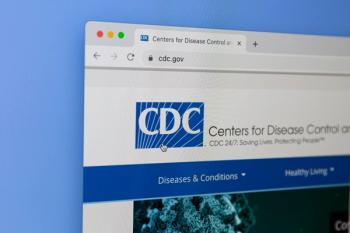Pharmacy benefit managers (PBMs) were first developed in 1958 as a prepayment plan for prescriptions. Today, PBMs function as middlemen between pharmacies, plan sponsors, drug manufacturers, and wholesalers.1
With the increasing complexity of PBM services and horizontal and vertical integration within the drug supply chain, concerns have grown about PBMs’ business practices, such as the transparency of drug pricing and reimbursements to pharmacies.1 At the end of 2023, the Centers for Medicare & Medicaid Services (CMS) issued a letter expressing unease over “certain practices by some plans and PBMs that threaten the sustainability of many pharmacies, impede access to care, and put increased burden on health care providers.”2
About the Author
Josephine M. Gresko is a PharmD candidate at the Virginia Commonwealth University School of Pharmacy in Richmond.
Joseph L. Fink III, JD, DSc (Hon), BSPharm, FAPhA, is emeritus professor of pharmacy law and policy as well as former Kentucky Pharmacists Association Professor of Leadership at the University of Kentucky College of Pharmacy in Lexington.
Individual states began to tackle PBM practices in 2017 through legislation. To date, all 50 states have enacted legislation regulating PBMs, with 156 laws in total.3 The most common provisions include prohibiting gag clauses on pharmacies, which prevent them from disclosing cost and pricing information to a patient; limiting patient cost-sharing; and requiring PBMs to obtain licensure or registration.3
Despite increasing PBM regulations, low reimbursement rates continue to be a driving force for pharmacy closures, particularly independent pharmacies, which are often reimbursed at a lesser amount compared with their chain counterparts.4,5 A 2019 study found that between 2009 and 2015, 1 in 8 pharmacies operating had closed, disproportionately affecting independent pharmacies and low-income communities.5 This is particularly detrimental in rural areas where residents may live hours away from the closest pharmacy, impeding access to care and threatening medication management.4 This puts vulnerable populations at risk for hospitalization due to medication nonadherence.6 Furthermore, low pharmacy density increases wait times at existing pharmacies, putting pressure on staff to deliver care in a timely manner.4
Multiple states have restructured their Medicaid pharmacy benefits, resulting in millions of dollars saved. For example, West Virginia Medicaid manages its pharmacy benefits directly instead of contracting with managed care organizations. An actuarial study published in 2019 estimated that the state saved $54.5 million by making this switch.7 Kentucky enacted similar legislation, hiring MedImpact as the sole PBM for its Medicaid program. This resulted in about $283 million in savings.8
State reforms have paved the way for federal legislation. One example, the Pharmacy Benefit Manager Reform Act, would create 3 requirements for PBMs. First, PBMs would have to disclose information to the plan sponsor including drug manufacturer co-payment assistance, a list of drugs covered by the plan, and total net spending on prescription drugs. Second, the bill would prevent PBMs from engaging in spread pricing, which occurs when a PBM charges a payer more for a drug than it pays the pharmacy for the claim. Third, the PBM would have to pass on any rebate, discount, or fee from drug manufacturers to the plan sponsor.9
Similarly, the Pharmacy Benefit Manager Transparency Act of 2023 would prohibit PBMs from engaging in 2 practices: assigning patients co-payments for prescription drugs that are higher than what the insurer pays for the drug, known as a clawback, and lowering pharmacy reimbursements or increasing fees in response to changes in federally funded plans. PBMs would be exempt from these provisions if they pass the total amount of all discounts to the plan sponsors and disclose pricing and reimbursement information.10
Regardless of these legislative efforts, CMS says it will continue to monitor PBMs and plan sponsors closely to ensure compliance.2
References
1. Mattingly TJ II, Hyman DA, Bai G. Pharmacy benefit managers: history, business practices, economics, and policy. JAMA Health Forum. 2023;4(11):e233804. doi:10.1001/jamahealthforum.2023.3804
5. Guadamuz JS, Alexander GC, Zenk SN, Qato DM. Assessment of pharmacy closures in the United States from 2009 through 2015. JAMA Intern Med. 2020;180(1):157-160. doi:10.1001/jamainternmed.2019.4588
6 . Qato DM, Alexander GC, Chakraborty A, Guadamuz JS, Jackson JW. Association between pharmacy closures and adherence to cardiovascular medications among older US adults. JAMA Netw Open. 2019;2(4):e192606. doi:10.1001/jamanetworkopen.2019.2606
7. Carve out Medicaid pharmacy services using a single pharmacy benefits manager. HB 30 House member budget amendment requests. 288 #31h (Virginia 2024). January 22, 2024. Accessed February 2, 2024. https://hac.virginia.gov/committee/files/2024/1-22-24/HB30_Patron_Order.pdf
10. Pharmacy Benefit Manager Reform Act, S 1339, 118th Cong, 2nd Sess (2023). Accessed February 2, 2024. https://www.congress.gov/bill/118th-congress/senate-bill/1339/text
11. Pharmacy Benefit Manager Transparency Act of 2023, S 127, 118th Cong, 1st Sess (2023). Accessed February 2, 2024. https://www.congress.gov/bill/118th-congress/senate-bill/127/text














































































































































































































